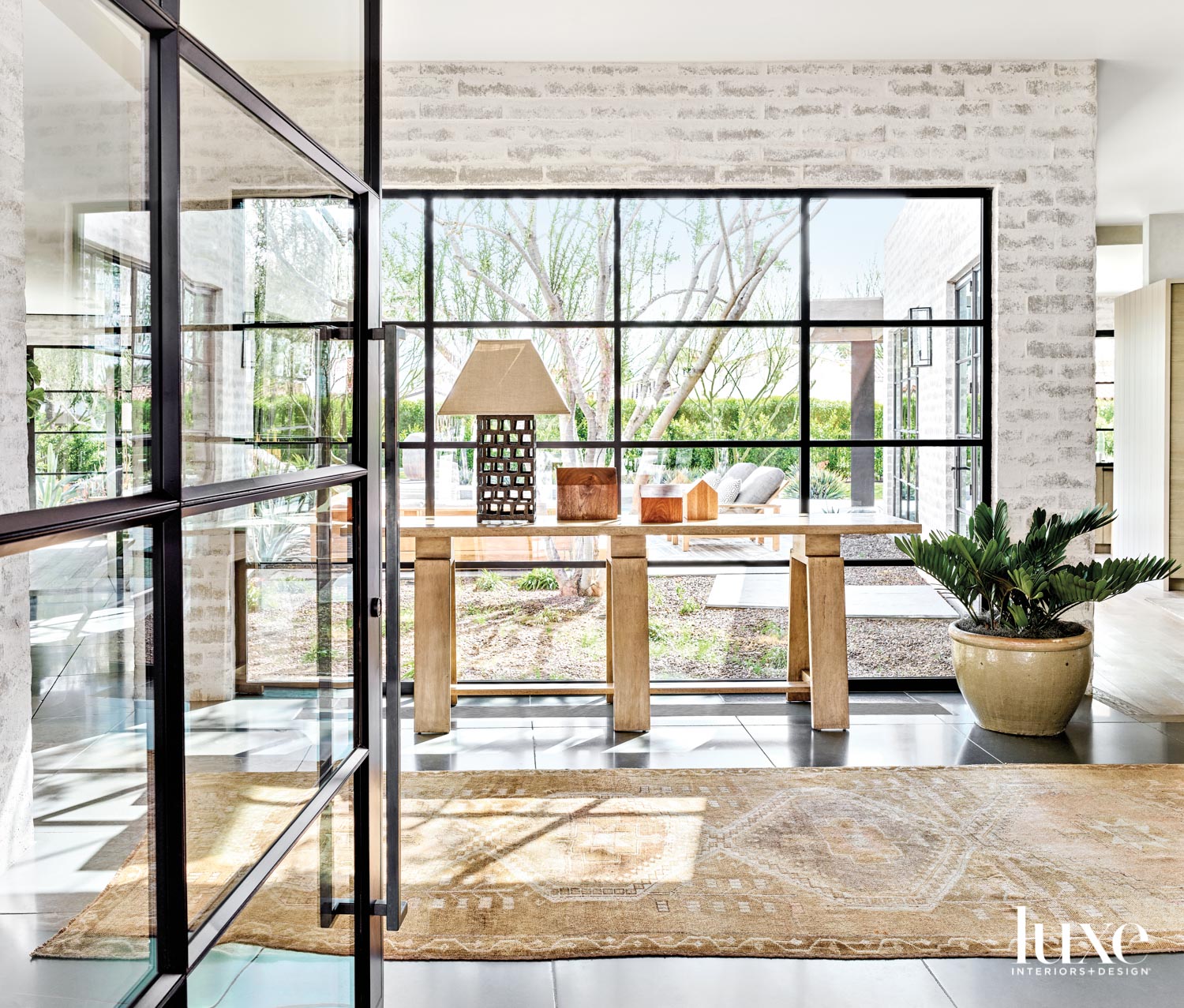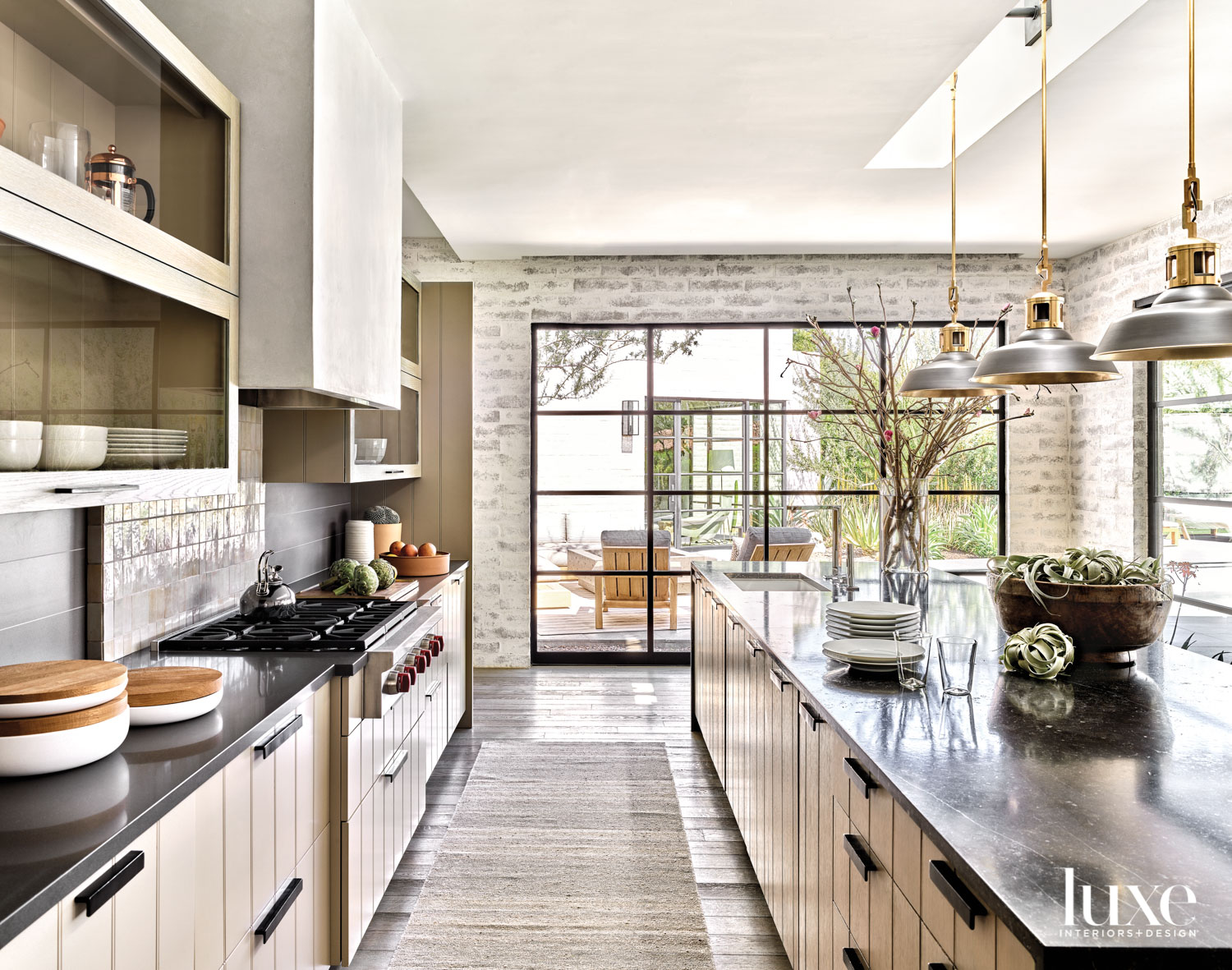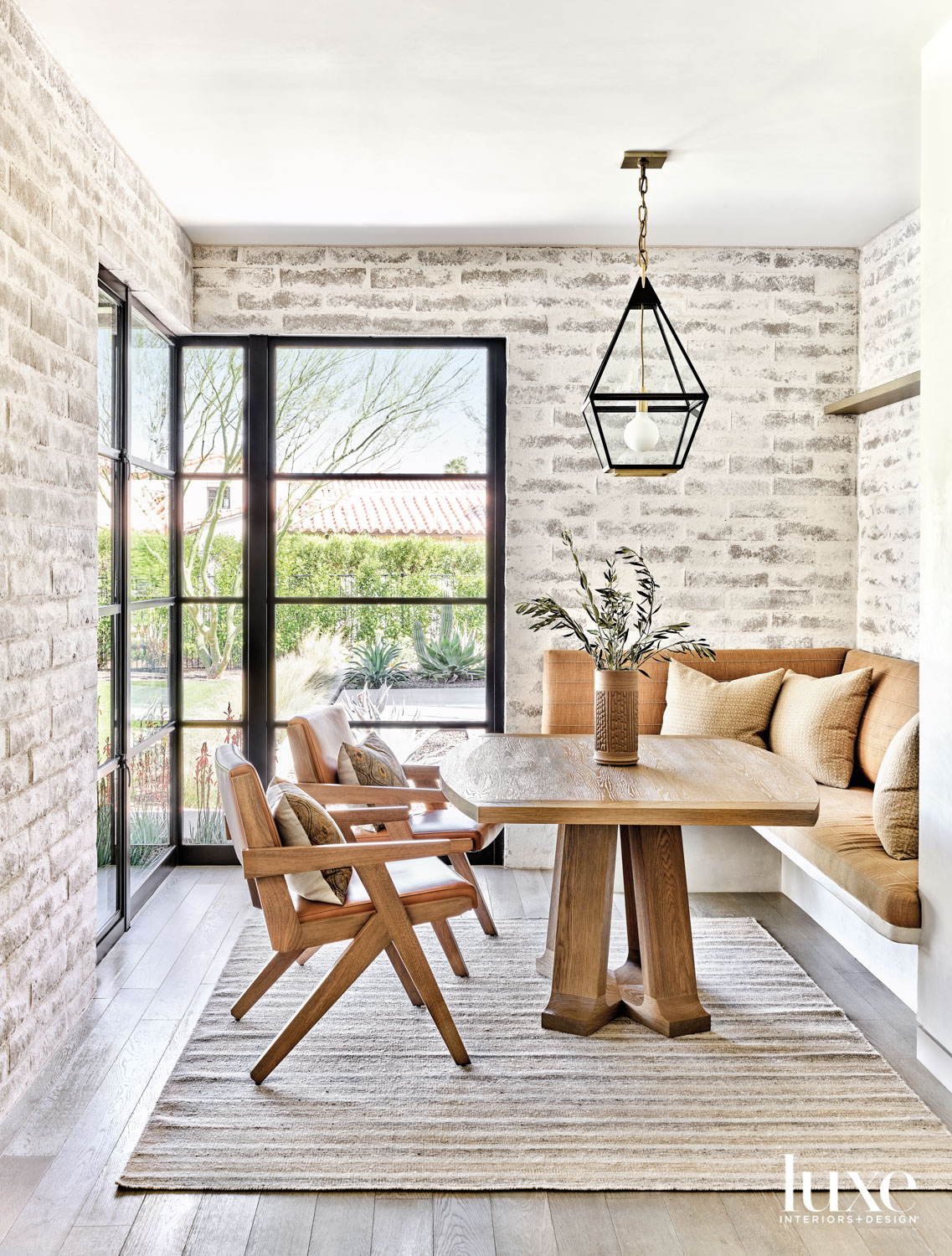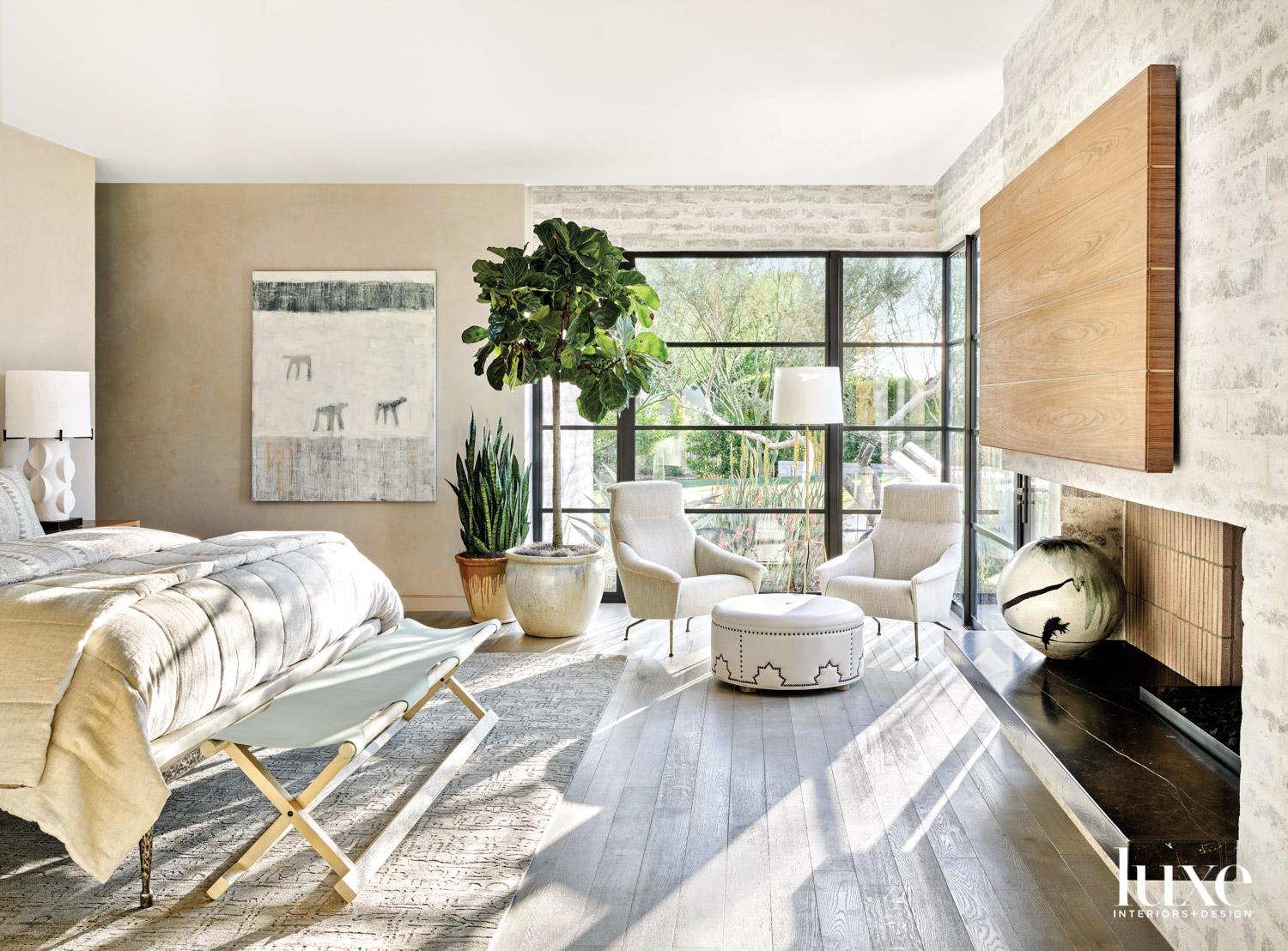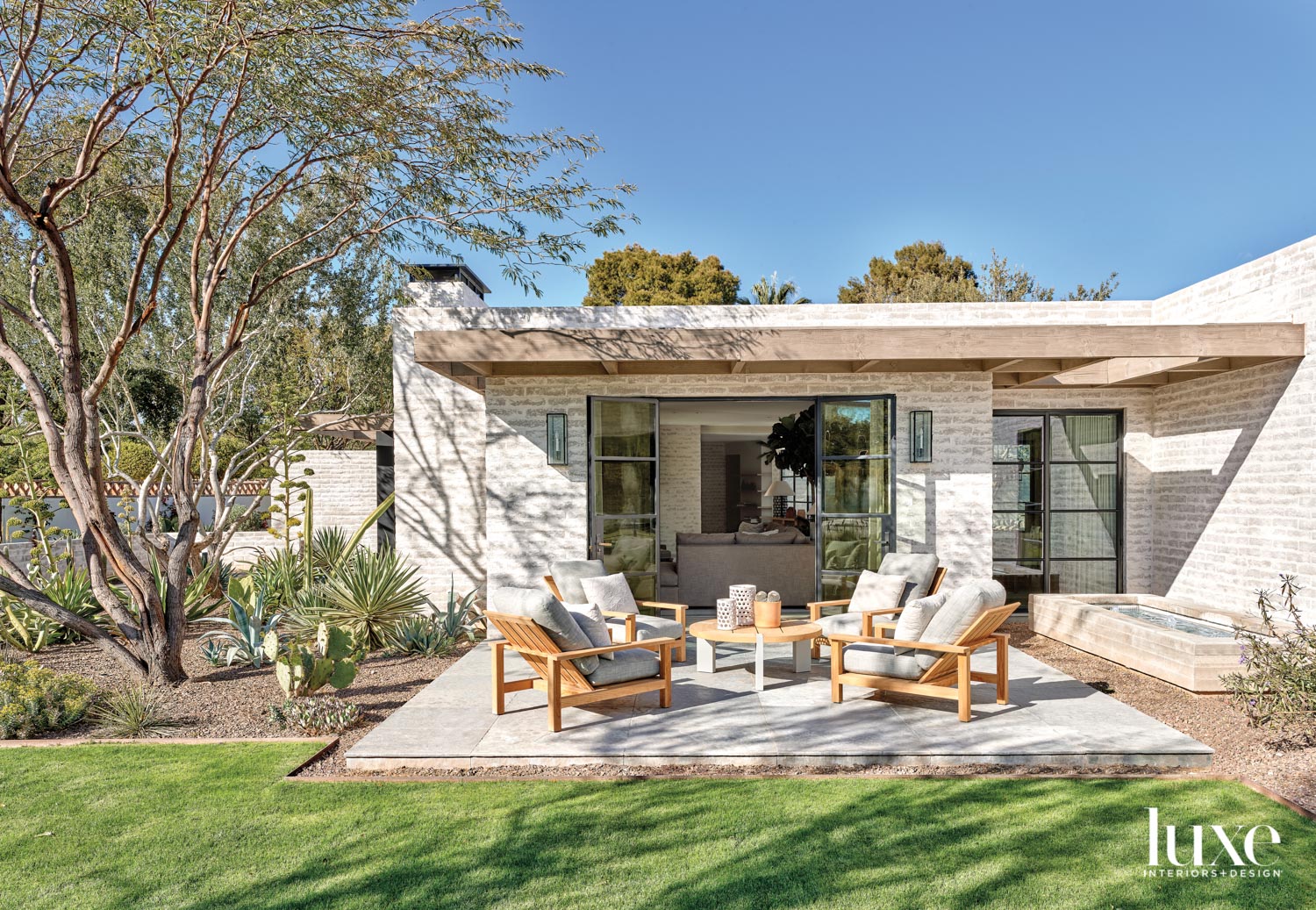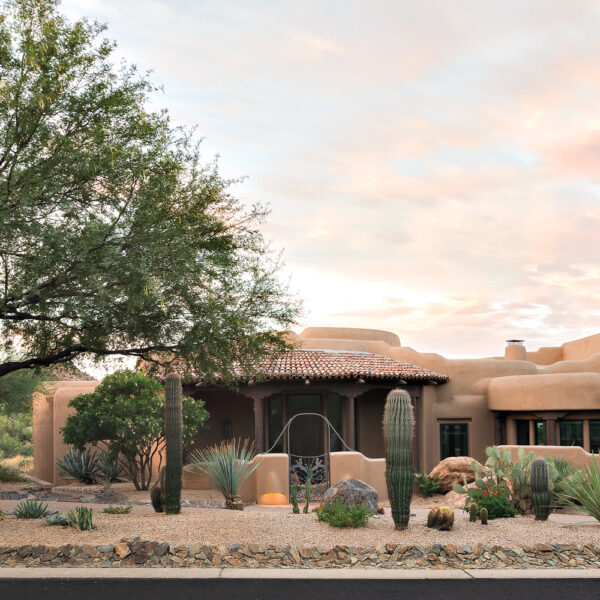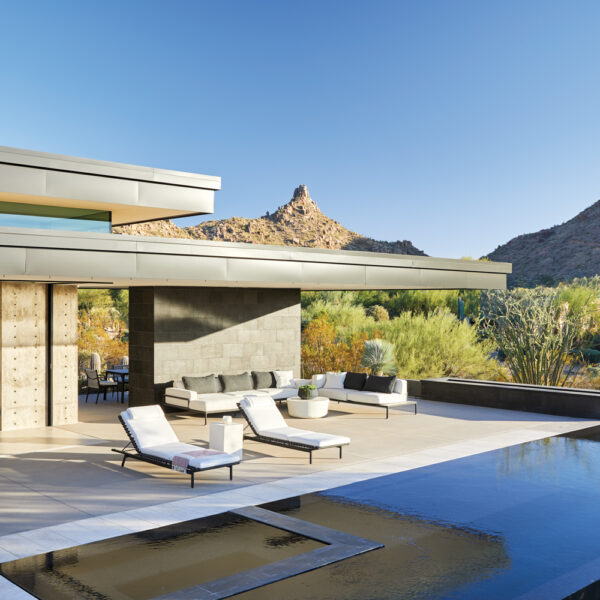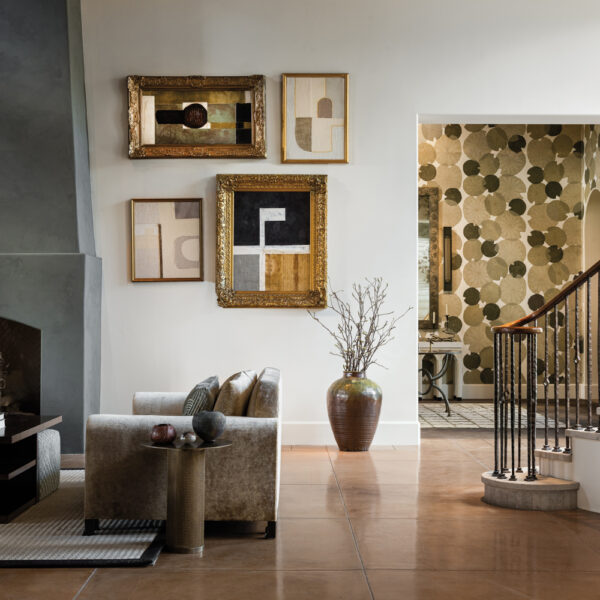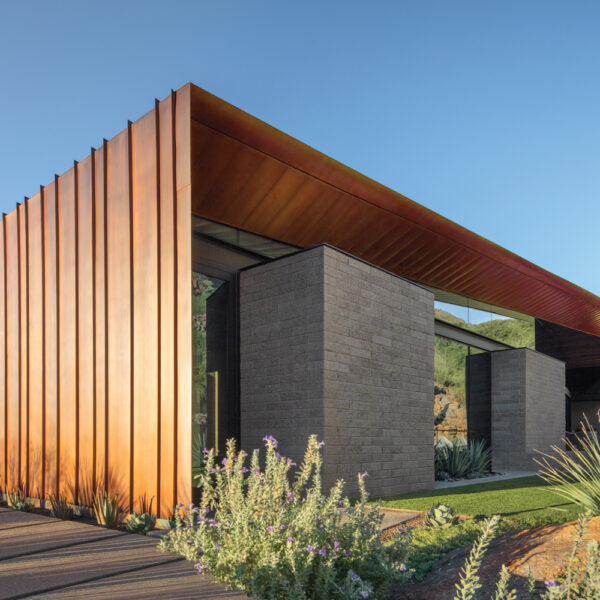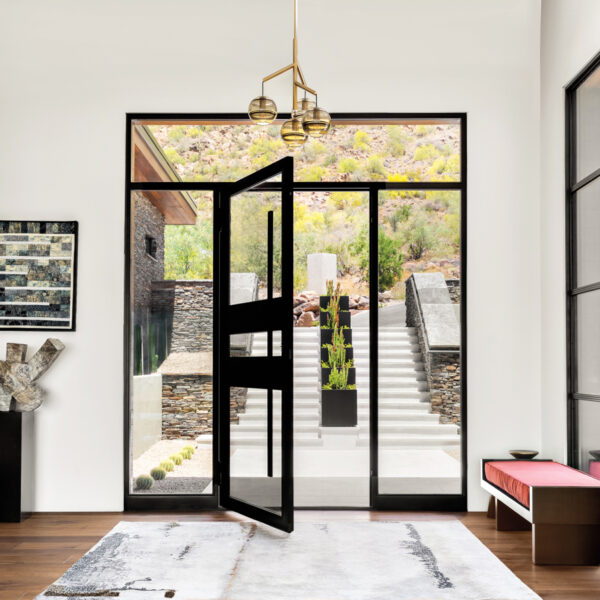Architect Louis Kahn once said, “A room is not a room without natural light.” It is this vital ingredient that interior designer David Michael Miller played upon in his redesign of a Paradise Valley home, taking full advantage of the dwelling’s architecture.
Miller came into the project with an intimate knowledge of the house—he had designed the interiors during a previous renovation, working in tandem with architect Susan Biegner of Biegner-Murff Architects as well as general contractor Brock Brunkhorst and co-owner Nancy Brunkhorst of Nance Construction. The original design was done by Frank Lloyd Wright apprentice Blaine Drake in the early 1960s, but with its small footprint, terra cotta-colored slump block and low ceilings, the house didn’t function well for contemporary living. Expanding the floor plan, increasing the ceiling height and adding a pool that took advantage of what Miller refers to as a “splayed U shape” provided for the needs of a modern family. Biegner’s architectural changes—which also included a kitchen skylight, a corner glass configuration for the study and a water feature for the patio—set the stage for Miller’s original interiors, as well as those to come.
Another challenge approached in the initial redesign were those slump-block walls, which appear throughout the home, inside and out. Miller first had them painted, then applied a limewash to create a filmy effect. “It amplifies the texture,” Miller says. “None of us really like slump block, but as a textural background, especially with that white limewash, it’s really compelling.”
Fast forward five years later, and new owners approached Miller to refresh the interiors. As he explains, “the clients decided not to bring in a designer from out of town but find the designer who did the past millwork and finishes”—i.e., him. Though the home lacks expansive views, the owners were drawn to the abode for its privacy and green vegetation not often found in the desert. And as soon as Miller learned the East Coast-based couple’s design preferences, he knew why this particular residence worked for them. “I understood why they would be attracted to this house’s clean lines and rich textures,” he says.
Once again Miller took advantage of those architectural appointments created in the past iteration by Biegner and the Brunkhorsts, starting with the structure’s color foundation. The Brunkhorsts had constructed smooth, gray plaster walls which, interspersed with the limewashed slump block, created a warm counterpoint to the block’s lighter hues. To play to this warmth, Miller chose a neutral color scheme, with green plants providing most of the accent color.
The home’s simple sophistication works in concert with the natural light, which streams in through a variety of different-sized windows, highlighting each room and, seemingly, everything in it. “There’s something about the divided light,” Miller says. “If you had four panels of glass in the house, you wouldn’t have the same kind of feeling. That’s one of the benefits of there not being a particular view. You don’t feel like you’re slicing it up. It just gives you a nice sense of enclosure and an organization to the spaces.”
The clients asked for an easy-living abode, so calm intimacy was the order of the day. The living room and dining room naturally flow into each other, united by stylishly simple furniture, monochromatic rugs and light wood finishes. The living room eschews formality with a sectional that invites lounging and a custom teak-and-brass cabinet designed to hide the television. To create a sanctuary in the main bedroom, Miller used light finishes and subtle color, which are bathed in natural light thanks to a corner of nearly floor-to-ceiling windows. Those windows are also found in abundance in the kitchen and the adjacent breakfast nook. “Openness and daylight were the mantras for the kitchen,” Miller says. But an open, modern aesthetic, he emphasizes, didn’t have to create “a cold effect.” He incorporated Belgian bluestone counters and a glazed Moroccan tile backsplash to warm up the room.
“Nothing’s uptight and perfect, as if you don’t want to sit down,” the designer says. “I feel like the interiors are part of the building, as opposed to being in the building. It creates a really peaceful and calm kind of space.”


